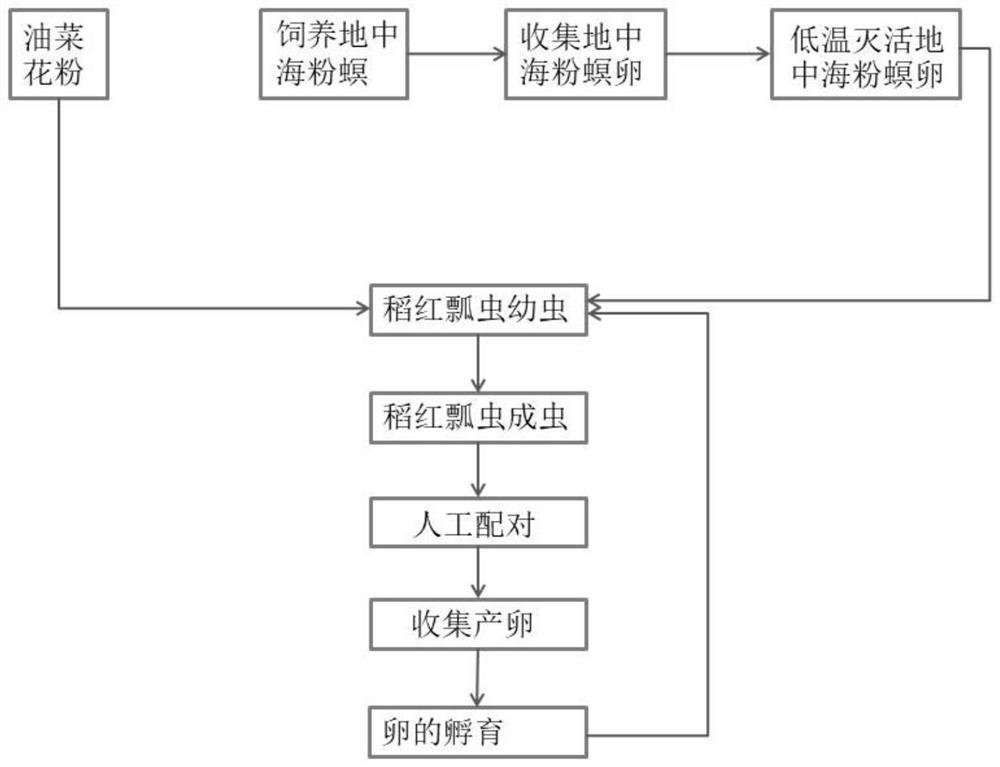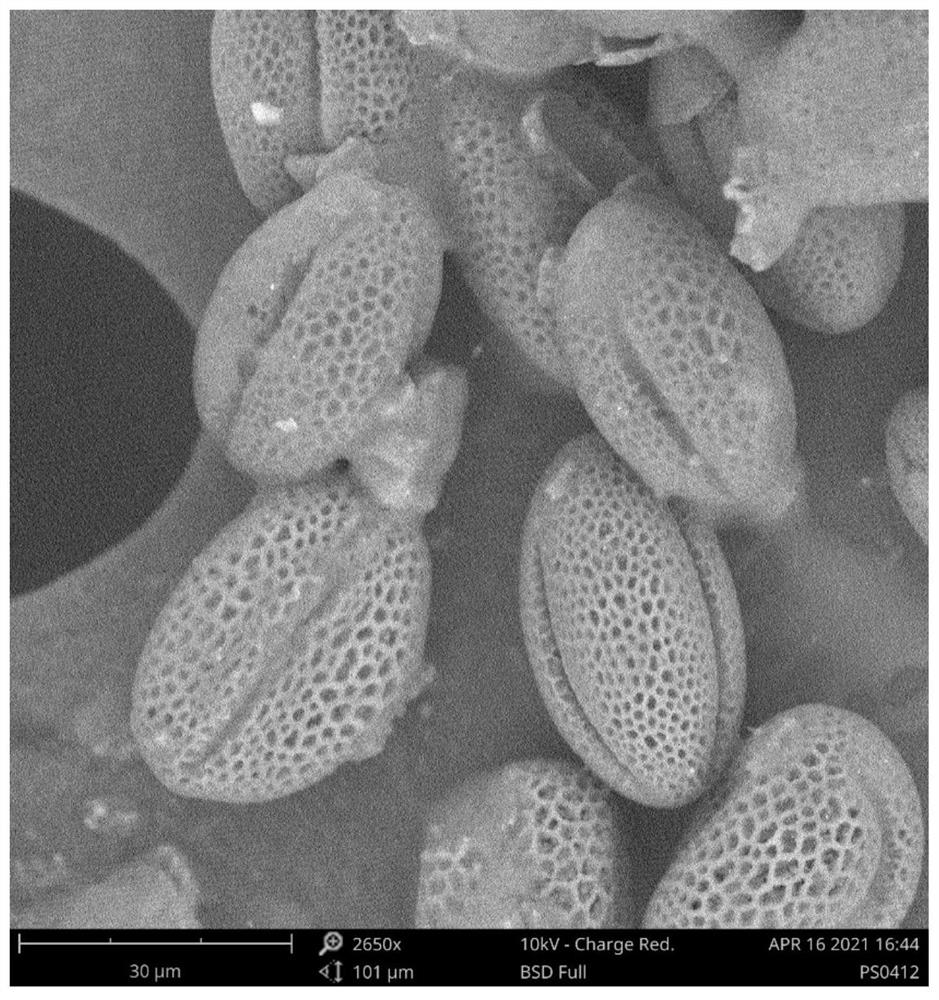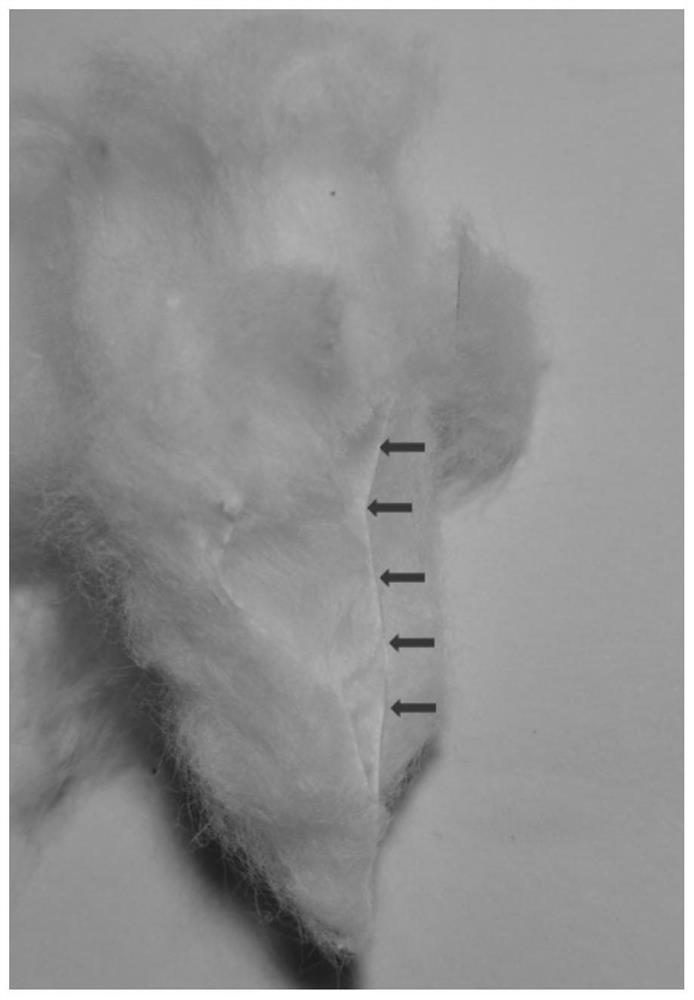Method for feeding Micraspis discolor (Fabricius) by using mixed food of eggs of ephestia kuuhniella and rape pollen
A technology for rape pollen and red ladybug, applied in animal feed, animal feed, application and other directions, can solve the problems of low survival rate of larvae, increase and decrease in number, and prolong development time, and achieves the improvement of survival rate and yield and reduces operation. The effect of tedious and simple overall steps
- Summary
- Abstract
- Description
- Claims
- Application Information
AI Technical Summary
Problems solved by technology
Method used
Image
Examples
Embodiment
[0040] A kind of method that uses Mediterranean meal borer ovum and rapeseed pollen mixed food to raise rice red ladybug, such as figure 1 As shown, it specifically includes the following steps:
[0041] 1. Food preparation
[0042] 1.1. Rapeseed pollen: buy rapeseed pollen that has not been broken, such as figure 2 As shown, the scanning electron microscope can be found to have a complete pollen grain structure.
[0043] 1.2. Feeding of Mediterranean mealworm eggs: the food material for raising Mediterranean mealworms is a mixture of flour and wheat bran in a ratio of about 2:1;
[0044]1) Egg pickup: Sprinkle a layer of food materials about 0.5cm thick in a small plastic box of 20*12*8cm. The raw material is flour and wheat bran mixed in a mass ratio of 2:1, and stick it on the outside of the small box. On the label, write the date of inoculation. Sprinkle fresh Mediterranean mealworm eggs (within 24 hours of laying eggs) evenly in the box, and then cover with a layer o...
PUM
 Login to View More
Login to View More Abstract
Description
Claims
Application Information
 Login to View More
Login to View More - R&D
- Intellectual Property
- Life Sciences
- Materials
- Tech Scout
- Unparalleled Data Quality
- Higher Quality Content
- 60% Fewer Hallucinations
Browse by: Latest US Patents, China's latest patents, Technical Efficacy Thesaurus, Application Domain, Technology Topic, Popular Technical Reports.
© 2025 PatSnap. All rights reserved.Legal|Privacy policy|Modern Slavery Act Transparency Statement|Sitemap|About US| Contact US: help@patsnap.com



